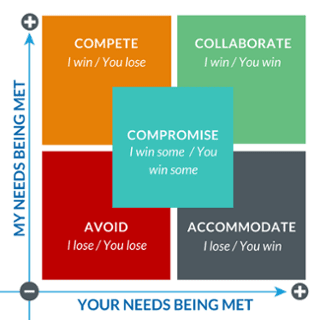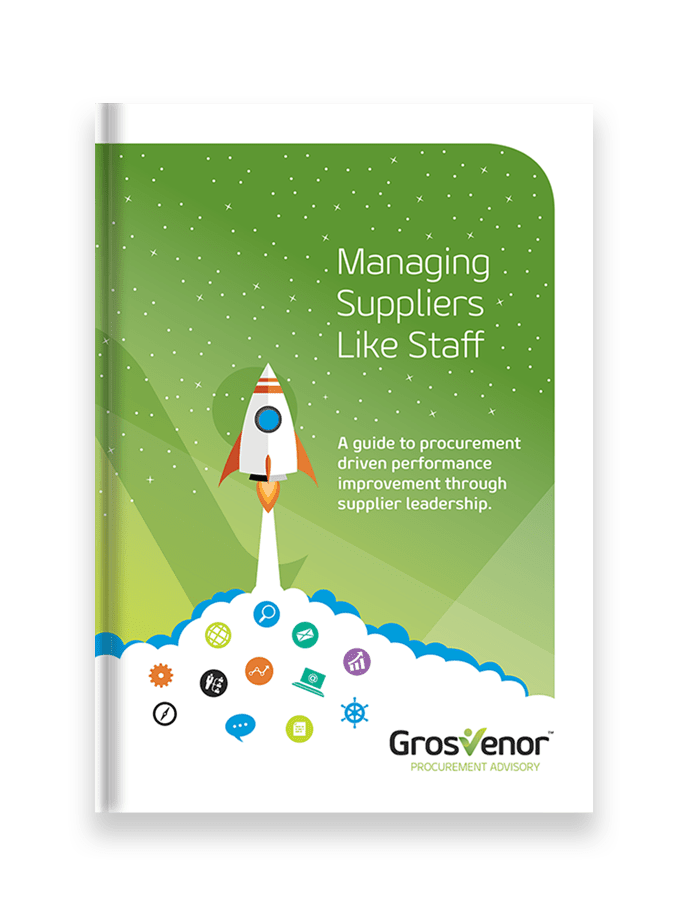3 steps to negotiate win-win outcomes for your contract

How to negotiate your supplier contract
Anyone who’s ever come into contact with a toddler will know that for most of us negotiation skills are learnt early. Unlike a toddler, adult negotiators understand that there are two sides to any negotiation and both negotiators want to have their needs met. Here’s how to negotiate the best outcomes for your contract, while keeping your supplier relationships intact.
1. Choose your negotiation approach
There are five common approaches people take when negotiating.

- Avoid: Doesn’t want to negotiate, so they’re difficult to get to the table and hard to keep there. No-one wins.
- Compete: Wants to have all their needs met and doesn’t care about yours (usually associated with limited resources). Won’t care about relationships or ongoing business. They win, you lose.
- Accommodate: It’s just not that important to them (usually associated with low risk or low impact opportunities), so they’re happy for you to have it your way. You win, they lose.
- Compromise: There are enough benefits to reach an agreement but you both compromise. Both parties win and lose.
- Collaborate – Is willing to share the risk and reward between you both (often with strategic intent). Everyone wins!
How each party approaches the contract negotiations, and the dynamics between the two approaches, has a big impact on the outcome.
Relationships are important
When negotiating as a Contract Manager, it’s all about maintaining your working relationships. Your objective at the negotiation table should be to reach an agreement that works for both sides and to walk away with your supplier relationships intact. This means adopting a collaborative approach.
While it would make everyone’s job easier if everyone approached negotiation collaboratively – it’s often not how it plays out. It can take a fair bit of maturity and creativity to find a solution where everyone wins. So when preparing for a negotiation give some thought to the approach your supplier is likely to adopt.
If you think it’s likely to be one of the less desirable approaches, have some strategies up your sleeve to encourage them towards a win-win situation, and know it’s always an option to walk away if they won’t move.
2. Plan and prepare
Failing to plan is planning to fail. There is nowhere that this saying is truer than in negotiation.
As the Contract Manager you need to organise the:
- practical elements: time, place, participants, agenda, note taking
- rules of engagement: ask participants to focus on the problem/process; not the other people
- term sheet: to keep the negotiations focused and everyone on the same page.
3. Do your research
Then it’s time to do your homework so you’re properly prepared to represent your organisation’s interests in the conversation.
Know your position
Knowing what you want, what you are willing to give for it and when it is no longer worth your while is essential to successful negotiation. Just like Kenny Rogers recommends in The Gambler:
You’ve got to know when to hold ’em
Know when to fold ’em
Know when to walk away
And know when to run…
Before you meet be sure to know:
- what you want: break this down to your must haves, highly desirables and nice to haves
- what you can give: list possible trade-offs and have them approved
- your escalation points: understand what you can agree to and when you need to get further approval
- your walk-away point: understand your best alternative to a negotiated agreement (BATNA).
Aim for win win contract outcomes every time. Negotiation, like so much in contract management, is about relationships. Your goal is to come to a win win agreement that will keep your supplier relationship intact.
Know the other party’s position
So once you’ve fleshed out your position, take some time to understand the other party as well. Knowing where they are coming from will make it easier to find common ground.
Ask yourself:
- What do we know about this supplier and their industry? Research their product/service
- What do they want? Does it overlap with what we want anywhere?
- What is their BATNA?
- Where are their pain-points and how can you address these to create value for everyone?
At the negotiation table, remember…
- Always aim for a collaborative approach for happy supplier relationships
- Be prepared:
- know what you want and what you’re prepared to give
- always consider the other party’s perspective
- know when to walk away.
- Work towards an agreement that is fair to both sides and focused on outcomes – not the other person.
- Stop proceedings if they are not going well or you are losing control of the process.








